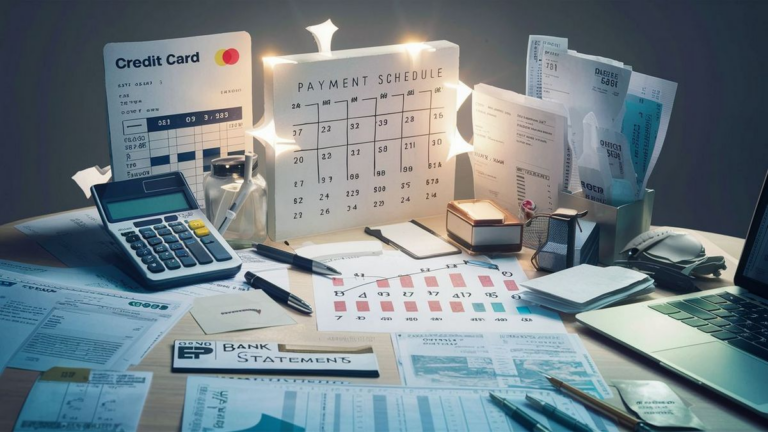Understanding the amount of interest you’ll pay on your credit card is crucial for managing your finances effectively. Credit cards offer convenience and flexibility in making purchases, but they also come with the cost of interest if you carry a balance from month to month. In this comprehensive guide, we’ll delve into the factors that determine the interest you’ll pay on your credit card, how interest is calculated, and strategies to minimize interest charges.
Factors Affecting Credit Card Interest
Several factors influence the amount of interest you’ll pay on your credit card:
- Annual Percentage Rate (APR): The APR is the annualized interest rate charged by your credit card issuer. It can vary based on your creditworthiness and the type of card you have.
- Outstanding Balance: The amount you owe on your credit card directly impacts the interest you’ll pay. Interest is typically charged on the average daily balance, which includes both purchases and any previous balances carried over.
- Payment History: Late payments or missed payments can result in penalty APRs, which are higher than your regular APR. Maintaining a history of on-time payments can help lower your overall interest costs.
- Credit Utilization Ratio: This ratio compares your credit card balances to your credit limits. Higher utilization ratios can indicate higher risk to lenders and may result in higher interest rates.
- Card Type: Different types of credit cards, such as rewards cards or low-interest cards, may have varying interest rates and terms.
How Credit Card Interest Is Calculated
Most credit card issuers use the average daily balance method to calculate interest charges. Here’s how it works:
- Calculate Daily Periodic Rate: Divide your APR by the number of days in the year to determine the daily interest rate.
- Compute Average Daily Balance: Add up the daily balances for each day in the billing cycle and divide by the number of days.
- Multiply Daily Rate by Average Balance: Multiply the daily periodic rate by the average daily balance to calculate the interest for each day.
- Sum Daily Interest Charges: Add up the interest charges for each day in the billing cycle to determine the total interest for the month.
Minimizing Credit Card Interest
While it’s essential to understand how credit card interest is calculated, there are several strategies you can use to minimize the amount of interest you’ll pay:
- Pay Your Balance in Full: By paying your balance in full each month, you can avoid interest charges altogether.
- Take Advantage of Introductory Offers: Many credit cards offer introductory periods with low or 0% APRs. Take advantage of these offers to pay down balances interest-free.
- Make More Than the Minimum Payment: Paying more than the minimum payment each month can help reduce your outstanding balance faster and lower your overall interest costs.
- Transfer Balances to a Lower Interest Card: Consider transferring high-interest balances to a card with a lower APR or a balance transfer offer.
- Avoid Cash Advances: Cash advances typically have higher interest rates and may not have a grace period, resulting in immediate interest charges.
Understanding how much interest you’ll pay on your credit card is essential for managing your finances wisely. By considering factors such as your APR, outstanding balance, and payment history, you can take steps to minimize interest charges and save money over time. Remember to pay your balance in full whenever possible and explore strategies such as introductory offers or balance transfers to reduce your interest costs. With careful planning and responsible financial habits, you can effectively manage your credit card debt and achieve your financial goals.
Frequently Asked Questions
Here are some commonly asked questions regarding credit card interest:
| Question | Answer |
|---|---|
| 1. Can I negotiate my credit card’s APR? | While it’s not common to negotiate APRs directly with credit card issuers, you can often request a lower rate if you have a good payment history and credit score. It’s worth contacting your issuer to inquire about any available options. |
| 2. How often is credit card interest compounded? | Credit card interest is typically compounded daily, meaning that interest accrues on a daily basis based on your outstanding balance. |
| 3. What should I do if I can’t pay my credit card balance in full? | If you can’t pay your balance in full, aim to pay more than the minimum payment to reduce the overall interest you’ll owe. Additionally, consider transferring balances to a card with a lower APR or exploring other options for managing debt. |
| 4. How does a balance transfer affect my credit score? | A balance transfer may initially cause a slight decrease in your credit score due to the opening of a new account and the potential impact on your credit utilization ratio. However, if you make timely payments and reduce your overall debt, it can ultimately have a positive effect on your credit score. |
Additional Strategies for Managing Credit Card Interest
In addition to the standard methods for minimizing credit card interest, there are some other strategies you can consider:
- Automate Payments: Setting up automatic payments can help ensure that you never miss a due date, reducing the risk of incurring late fees and penalty APRs.
- Monitor Your Credit Score: Regularly checking your credit score can give you insights into your creditworthiness and help you identify areas for improvement that may lead to lower interest rates.
- Negotiate Fees: In addition to APRs, you can sometimes negotiate other fees with your credit card issuer, such as annual fees or over-limit fees. It’s worth contacting customer service to discuss any available options.
See also:






